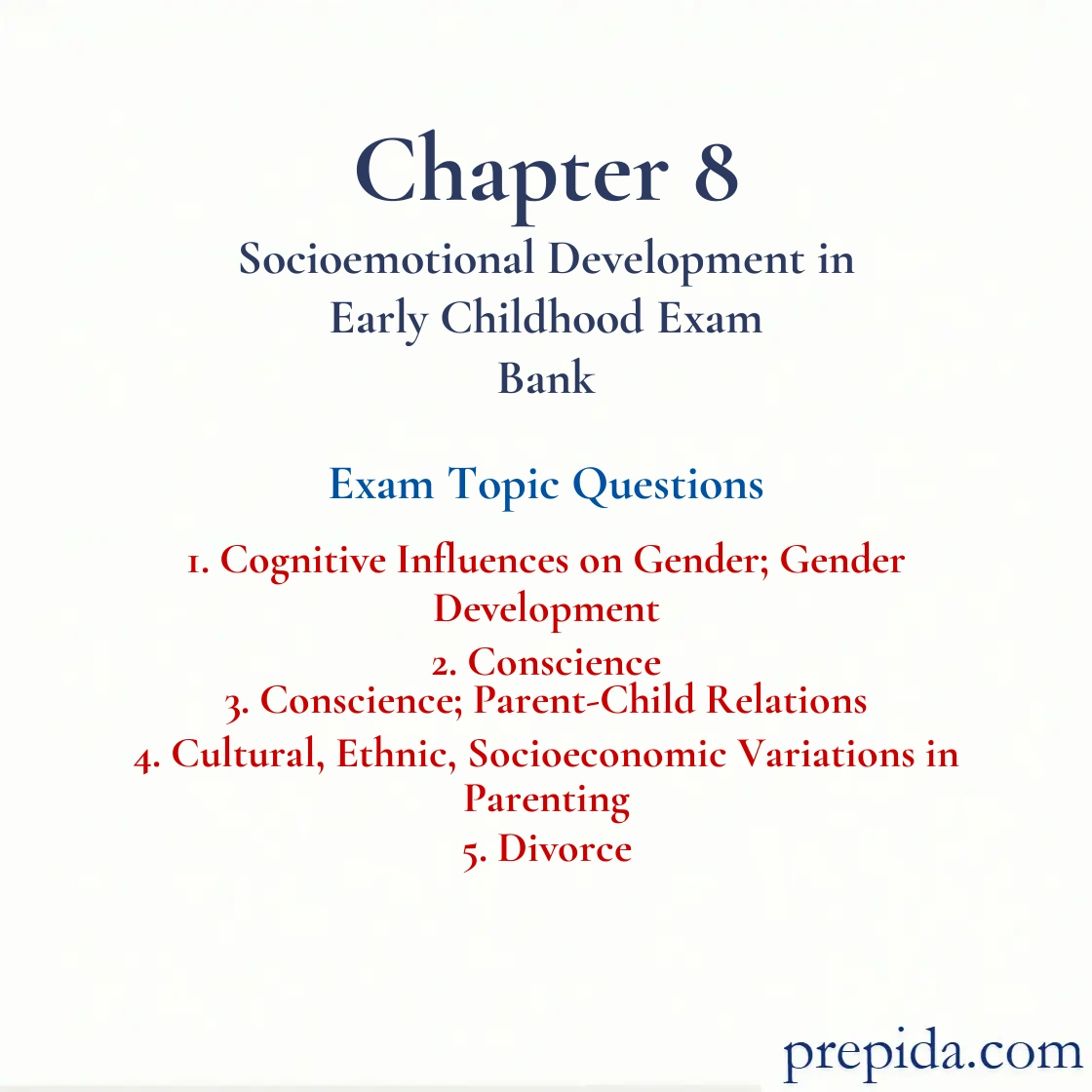
A ________ is a cognitive structure, a network of associations that guides an individual's perceptions.
- format
- schema
- subset
- system
Schemes: In Piaget’s theory, actions or mental representations that organize knowledge.
Bit by bit, children pick up what is gender-appropriate and gender-inappropriate in their culture and develop gender ________ that shape how they perceive the world and what they remember.
- identities
- roles
- schemas
- types
Schemes: In Piaget’s theory, actions or mental representations that organize knowledge.
A gender ________ organizes the world in terms of female and male.
- role
- identity
- bias
- schema
Schemes: In Piaget’s theory, actions or mental representations that organize knowledge.
Children are internally motivated to perceive the world and to act in accordance with their developing
- preferences.
- schemas.
- roles.
- orientations.
Which of the following fuels gender typing?
- gender schema
- gender identity
- gender bias
- gender mismatch
Gender Schema Theory: The theory that gender typing emerges as children develop gender schemas of their culture’s gender-appropriate and gender-inappropriate behavior.
________ refers to an internal regulation of standards of right and wrong that involves an integration of all three components of moral development, namely moral thought, feeling, and behavior.
- Ethics
- Protocol
- Constitution
- Conscience
Conscience: An internal regulation of standards of right and wrong that involves integrating moral thought, feeling, and behavior.
In Thompson's view, young children are moral ________, striving to understand what is moral.
- apprentices
- novices
- explorers
- adventurers
Nicola tries to take steps to avert potential misbehavior by her children before it takes place. The moment she sees that her 4-year-old daughter is going to have a meltdown, she distracts her with her favorite activity. She has regular talks with her ten-year-old son wherein she tries to impart her cherished values to him and indicates what is expected of him as he grows older. Nicola is
- being overly cautious in her parenting approach.
- being too authoritative in her approach to her children's moral development.
- acting as moral police to her children and may have a detrimental effect on their moral development.
- proactive in her approach to her children's moral development.
Moral Development: Development that involves thoughts, feelings, and behaviors regarding rules and conventions about what people should do in their interactions with other people.
Among the most important aspects of the relationship between parents and children that contribute to children's moral development are relational quality, parental discipline, proactive strategies, and ________.
- religious affiliation
- family culture
- conversational dialogue
- ethnicity
Preoperational Stage: Piaget’s second stage, lasting from about 2 to 7 years of age, during which children begin to represent the world with words, images, and drawings, and symbolic thought goes beyond simple connections of sensory information and physical action; stable concepts are formed, mental reasoning emerges, egocentrism is present, and magical beliefs are constructed.
Cultural changes that occur when one culture comes in contact with another are referred to as
- affiliation.
- acculturation.
- accommodation.
- adaptation.
Centration: Focusing attention on one characteristic to the exclusion of all others.
In contrast to lower-socioeconomic status parents, higher-socioeconomic status parents
- are less directive and more conversational with their children.
- are more concerned that their children conform to society's expectations.
- use physical punishment more in disciplining their children.
- create a home atmosphere with an authoritarian style of parenting.
In general, in the United States, African American and Latino family orientations differ from White family orientations in that
- the nuclear family is less prominent in White families.
- the extended family plays a greater role in African American and Latino families.
- the emphasis in African American and Latino families is on individual self-reliance.
- the emphasis in White families is on family attachment and unity.
Carl and Tulip are getting a divorce and want to know how they can best communicate the news to their young children. Ellen Galinsky and Judy David would suggest that
- the children be told that the support they receive from their parents is bound to change.
- it is best that only one parent be present while breaking the news.
- it is best that this painful matter should not be discussed repeatedly with the children.
- the children be told that they are not the cause of the separation.
Separation Protest: An infant’s distressed crying when the caregiver leaves.
Which of the following is true of children in divorced families?
- Most children in divorced families have a harder time adjusting than those from nondivorced families.
- Divorces inevitably impair children's ability to adapt to difficulties in their lives.
- Competent children cannot be raised in single-parent families.
- Children in divorced families are no more likely than children in nondivorced families to have academic problems.